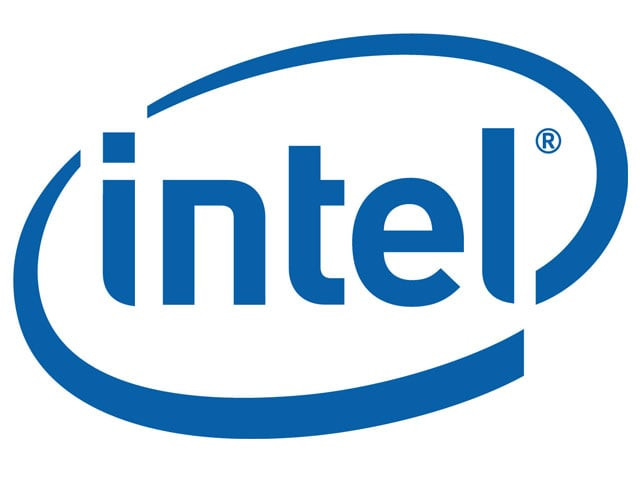
NS: The Asian market is considered a young market, which has recently started growing and evolving in terms of technology. There are young people who are driving this growth, and this generation is fast to adopt new technologies, and is very familiar with social media. In the APAC region, there has been a rise in technology bloggers whom Intel maintains a relationship with, for example last year Intel Pakistan held three blogger meet-ups in the major cities namely Karachi, Lahore & Islamabad. We know the APAC regions support of Intel just through the basic social networking tool which has more than 1 million "likes" on Facebook, with the bulk of these coming from the APAC region.
Q: What main factors do you think helped Intel with such outstanding growth results?
NS: Intel's direct relationship with consumers and the IT boom has fueled growth. The convenience of technology has allowed Intel to spread its growth globally and not limit itself to developed countries. Intel's different initiatives such as the Intel Teach program under the Intel Education have all contributed to the growth, as Intel is not only providing its customers with computer products but Intel is providing teachers with technology training, students with the chance to participate in global competitions, and most importantly Intel encourages innovative thinking, and rewards those masterminds with gifts to encourage the continuation of technological growth.
Q: Though Pakistan is still a small country compared to other giants in the APAC region, how has the country contributed to Intel's growth in the region?
NS: Intel is a world leader in computing innovation. In 1997, Intel opened its offices in Pakistan as a two person operation. We started off in Karachi, Lahore and Islamabad and had 50 partners in total. Today, we have expanded to 50 cities in Pakistan and have 1000 partners across Pakistan and are the leader of the IT Industry in Pakistan.
Intel has been the undisputed IT leader in Pakistan. The young generations' interest in technology and willingness to learn about the IT world has contributed to Intel's growth in Pakistan. Intel has played a pivotal role in facilitating growth in the IT industry of Pakistan, and because of Intel's other initiatives there is a sustained growth in Pakistan. Pakistan, which is a developing country, embraces Intel's other initiatives such as Intel Teach, Tech Leadership and resultantly through these initiatives consumers learn about different Intel products. The knowledge about IT after these initiatives encourage consumers to purchase and benefit from technology. One of the most important factors to keep in mind is that Intel does not target one sect of Pakistan's market, but it has entered all different niches further encouraging support from Pakistan.
Q: How has the recent growth spurt in the Asian region contributed in creating more consumer demand and data center development?
NS: The IT industry in the Asian region has undergone a dramatic increase in the past few decades. The economic growth in Asian regions has resulted in increased global competition in all different markets. Due to this rise, there has been an increase in demand for quality IT products enabling the Asian region to compete with all other continents.
Data centers are storage spaces, which allow companies to backup all their data. Due to the growth spurt, such facilities are essential to compete with global markets and to rise in the emerging markets. Without having facilities and products that can support economic and social progress, the Asian markets would not be able to compete with international markets. Hence, growth goes hand in hand with technological advancement which is why the Asian region is creating more consumer demand and progressing with data center development.
Q: With cloud computing firmly marking its presence globally, how has it benefitted Intel in terms of development and sales?
NS: Cloud and embedded computing represent two major growth areas for Intel. In the second quarter earnings call last month, Data Center Group sales jumped 15 percent year-over-year with cloud computing and enterprise servers leading the way. And Intel's Embedded Communications Group, which includes processors like the Xeon and Atom chips to power portable and other devices, leapt a whopping 25 percent.
We are building upon Intel's vision for cloud computing, dubbed Intel Cloud 2015. The Cloud 2015 vision features centers around three key elements; a world of interoperable federated clouds; automated movement of software applications and resources; and PC and device-savvy client-aware clouds that know what processing should take place in the cloud or on a mobile device such as a laptop, smartphone or tablet. Imagine, for example, future cars equipped with embedded sensors and microprocessors to constantly collect and analyze traffic and weather data. That information could be shared and analyzed in the cloud so that drivers could be provided with suggestions for quicker and safer routes.
With the growing popularity of mobile real-time and personalized technology, there is a corresponding rise in demand for specialized embedded computing systems to support a broad range of new applications - including many not yet envisioned.
Q: Our readers would like to know more about Data Centers and how has Intel worked on making them more technologically advanced in recent years?
NS: Data center is a facility to house computer systems and related components such as security systems, backups, telecommunication devices etc. Over the years Intel has evolved to optimize on the data center infrastructure to respond to business needs faster. Our new strategy is to shift the focus from reducing the number of data center facilities to optimizing on their use.
Cloud computing - the provision of computational resources on demand via a computer network - could transform the economics of computing and services. We think this really has the transformational power in terms of economics of computing as cloud computing lowers costs and provides more ubiquitous access to computing, helping society significantly. Hence we are now focusing on making our Data centers energy efficient and technologically advanced by increasing capacity in a scalable manner and allowing support for remote data center. These improvements have not only created business value but also allowed significant cost savings.
Q: In the past couple of months, mobile devices have significantly contributed to server chip sales, how would you elaborate on this?
NS: Intel has been facing explosive growth in the serve chip sales due to the burgeoning demand in the mobile device market. The world's biggest chipmaker will continue to benefit as the spread of mobile devices fuels "explosive" growth for processors used in data centers.
There's a significant, maybe even an insatiable, demand driver for more and more performance and computing power that's moving into the cloud. What gets lost is the explosive growth of all of these devices connecting to the Internet is driving a $10 billion dollar server business.
Q: How has the Intel Xeon E7 contributed to making things easier and better for today's data centers?
NS: The top-of-the-line powerful and reliable Intel Xeon processor E7 family based server processors deliver performance that is ideal for most data-demanding workloads with improved scalability and increased memory and I/O capacity, allowing data centers to handily adapt to changes in short-term business demands and address requirements for longer-term business growth. These advanced reliability and security features work to maintain data integrity, accelerate encrypted transactions, and maximize the availability of mission-critical applications. Intel Xeon processor E7 family servers provide flexibility for business critical solutions which contribute to making things easier and better for today's data centers.
Published in @Internet Magazine, September 2011


















COMMENTS
Comments are moderated and generally will be posted if they are on-topic and not abusive.
For more information, please see our Comments FAQ